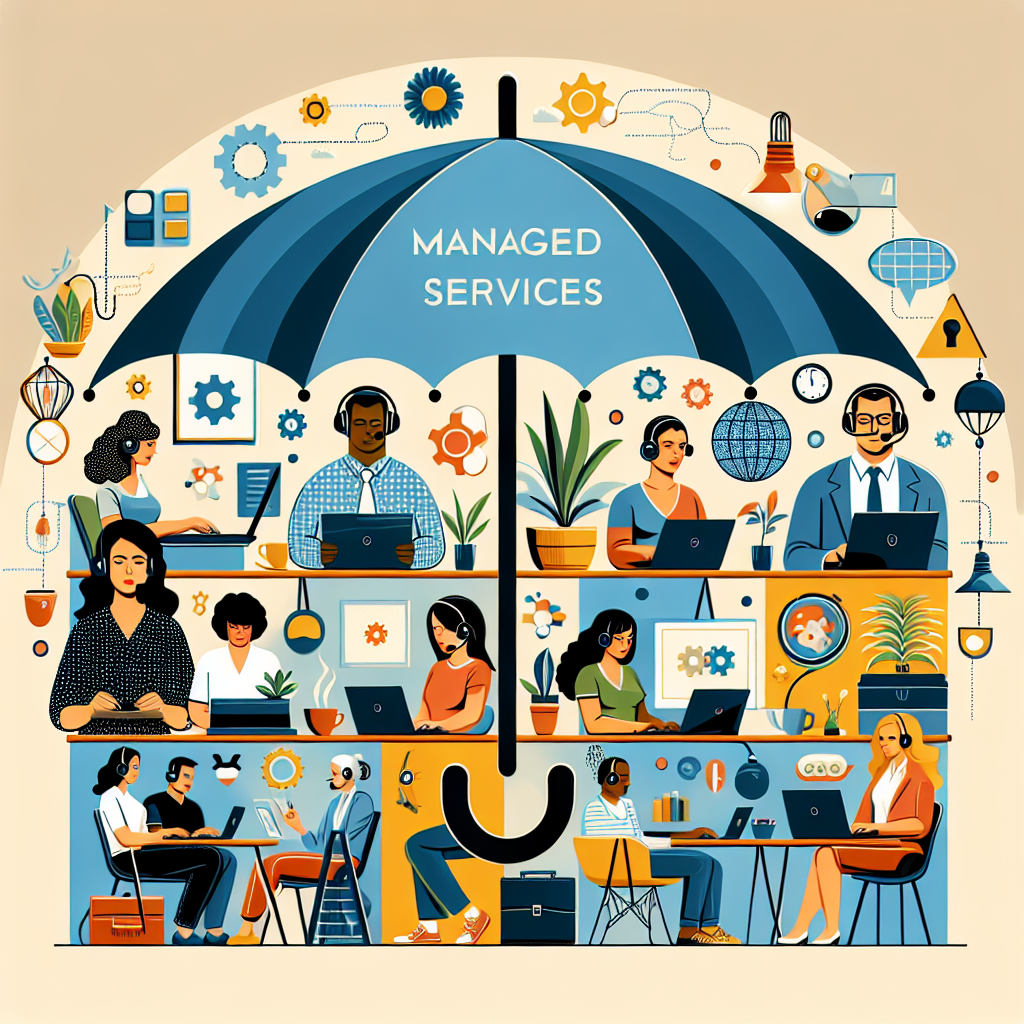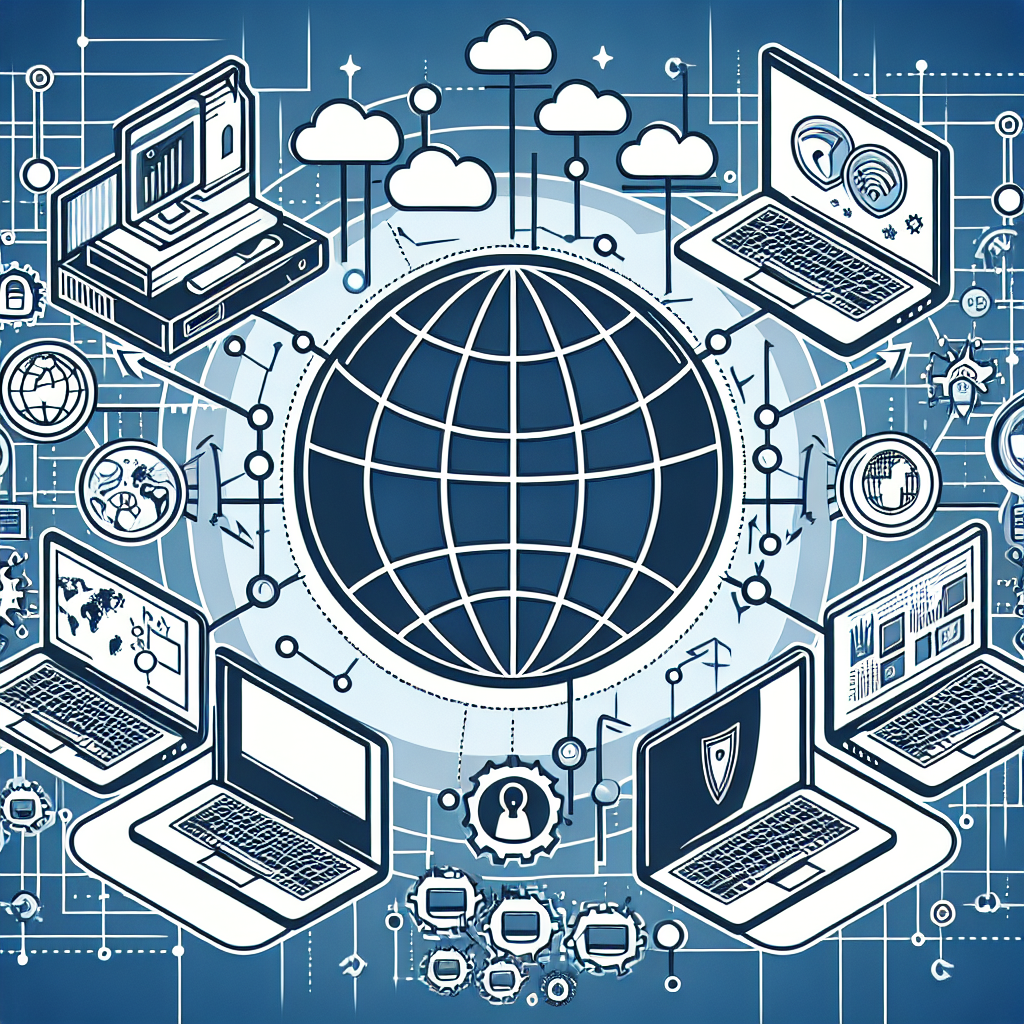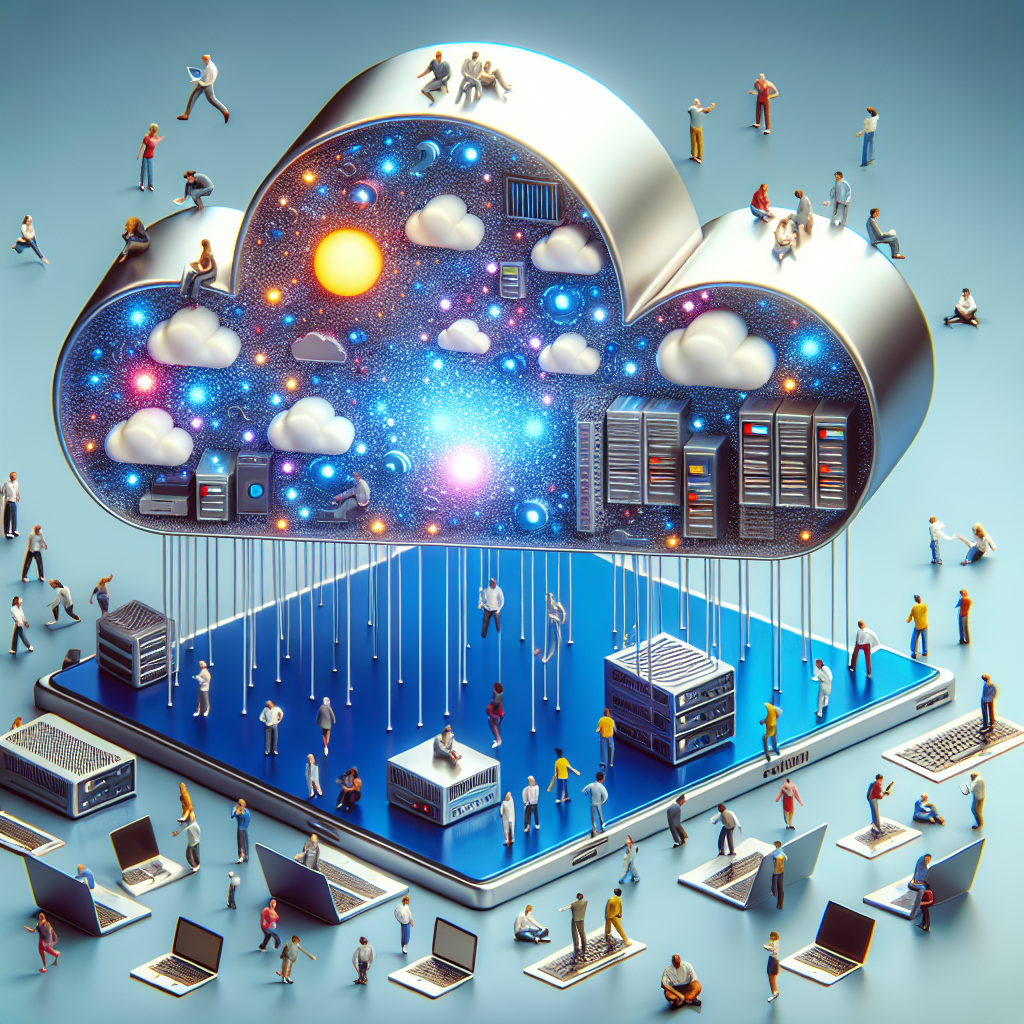Your cart is currently empty!
Tag: Workforces

Unlocking the Potential of Remote Monitoring for Remote Workforces
In today’s fast-paced and ever-changing business landscape, remote workforces have become increasingly popular. With advancements in technology and the rise of the gig economy, more and more companies are embracing the idea of allowing employees to work from anywhere in the world. While this flexibility can bring many benefits, it also presents challenges when it comes to managing and monitoring remote workers.One of the key challenges of managing remote workforces is ensuring productivity and efficiency. Without the physical presence of employees in an office setting, it can be difficult for managers to track their progress and ensure that they are meeting deadlines and goals. This is where remote monitoring comes in.
Remote monitoring involves using technology to track and monitor the performance of remote employees. This can include tracking their time spent on tasks, monitoring their internet usage, and even recording their screen activity. While some may view remote monitoring as invasive, when used properly it can be a powerful tool for improving productivity and accountability.
By implementing remote monitoring tools, managers can gain valuable insights into how their remote employees are working. They can see which tasks are taking longer than expected, identify potential bottlenecks, and track progress towards goals. This data can help managers make informed decisions about resource allocation, project prioritization, and performance evaluations.
Remote monitoring can also help to foster a sense of accountability among remote workers. Knowing that their activities are being tracked can motivate employees to stay focused and productive, even when working from home or a coffee shop. Additionally, remote monitoring can help managers identify employees who may be struggling or falling behind, allowing them to provide support and resources as needed.
In addition to improving productivity and accountability, remote monitoring can also enhance security for remote workforces. By monitoring internet usage and screen activity, managers can identify potential security risks and take steps to mitigate them. This can help to prevent data breaches and protect sensitive information from falling into the wrong hands.
Overall, unlocking the potential of remote monitoring for remote workforces can lead to a more efficient and productive workforce. By using technology to track and monitor remote employees, managers can gain valuable insights, foster accountability, and enhance security. With the right tools and strategies in place, remote monitoring can be a powerful tool for managing remote workforces in today’s digital age.

Unlocking the Power of Managed Services for Remote Workforces
The rise of remote work has presented both opportunities and challenges for businesses around the world. While the flexibility and cost savings of remote work are undeniable, managing a remote workforce can be complex and resource-intensive. As companies navigate the shift to remote work, many are turning to managed services to help them unlock the full potential of their remote workforces.Managed services are third-party providers that offer a range of IT and business support services, allowing companies to outsource tasks and functions that are not core to their business. By partnering with a managed services provider, businesses can access a team of experts who can help them optimize their remote workforce and overcome common challenges associated with remote work.
One of the key benefits of managed services for remote workforces is improved security. With employees accessing company networks and data from various locations and devices, the risk of cyber threats and data breaches is heightened. Managed services providers can implement robust security measures, such as encryption, multi-factor authentication, and threat monitoring, to protect sensitive information and prevent unauthorized access.
In addition to enhancing security, managed services can also improve the efficiency and productivity of remote workforces. By outsourcing IT support and maintenance tasks to a managed services provider, employees can focus on their core responsibilities without being bogged down by technical issues and downtime. Managed services providers can also provide proactive monitoring and troubleshooting to quickly resolve any issues that arise, minimizing disruption to remote work operations.
Furthermore, managed services can help businesses scale their remote workforces more effectively. As companies grow and add more remote employees, managing IT infrastructure and support can become increasingly complex. Managed services providers have the expertise and resources to support a growing remote workforce, ensuring that companies can scale their operations seamlessly and efficiently.
Overall, unlocking the power of managed services for remote workforces can help businesses streamline operations, enhance security, and improve productivity. By partnering with a managed services provider, companies can leverage the expertise and support they need to navigate the challenges of remote work and maximize the potential of their remote workforce.

How Managed Services Can Support Remote Workforces
With the rise of remote workforces in recent years, businesses are turning to managed services to help support their employees who are working from home. Managed services offer a range of benefits for remote workers, including increased security, improved communication, and enhanced productivity.One of the key ways that managed services can support remote workforces is by providing secure access to company data and applications. With employees working from various locations, it is essential to ensure that sensitive information is protected and that remote workers can securely access the resources they need to do their jobs. Managed services can help set up secure virtual private networks (VPNs) and implement multi-factor authentication to ensure that only authorized users can access company systems.
In addition to security measures, managed services can also help improve communication among remote workers. With the right tools and technologies in place, remote employees can easily collaborate with colleagues, share files, and stay connected with their team members. Managed services can set up video conferencing platforms, project management tools, and communication apps to facilitate seamless communication and collaboration among remote workers.
Furthermore, managed services can enhance the productivity of remote workforces by providing technical support and troubleshooting services. With a dedicated team of IT professionals available to assist with any technical issues, remote workers can focus on their tasks without having to worry about technology-related problems. Managed services can also proactively monitor and manage IT systems to prevent downtime and ensure that remote workers have access to the resources they need to be productive.
Overall, managed services play a crucial role in supporting remote workforces by providing secure access to company data, improving communication among remote employees, and enhancing productivity. As more businesses transition to remote work arrangements, investing in managed services can help ensure the success of remote workforces and enable employees to work efficiently and effectively from anywhere.

Empowering Remote Workforces with Remote Monitoring Tools
As the world continues to navigate the challenges brought on by the COVID-19 pandemic, remote work has become the new norm for many organizations. With employees working from home or in various locations, it has become increasingly important for companies to find ways to empower their remote workforces and ensure productivity and efficiency.One key tool that has become essential for remote workforces is remote monitoring tools. These tools allow employers to track and monitor employees’ activities and progress, even when they are not physically present in the office. By using remote monitoring tools, employers can ensure that work is being completed on time and that employees are staying focused and productive.
There are a variety of remote monitoring tools available on the market, each offering unique features and capabilities. Some tools allow employers to track employees’ computer activity, such as the websites they visit and the applications they use. Others provide real-time monitoring of employees’ screens, allowing employers to see exactly what employees are working on at any given time.
In addition to monitoring employee activities, remote monitoring tools can also help with task management and collaboration. Many tools offer features such as task assignments, project tracking, and team communication, making it easier for remote employees to stay organized and connected with their colleagues.
One of the key benefits of remote monitoring tools is the ability to provide feedback and coaching to employees. By tracking employees’ progress and performance, employers can identify areas where employees may need additional support or training. This can help to improve overall productivity and ensure that employees are meeting their goals and objectives.
However, it is important for employers to use remote monitoring tools responsibly and ethically. Employees should be made aware of the monitoring tools being used and how their data is being collected and used. Employers should also have clear policies in place regarding the use of remote monitoring tools and ensure that employees’ privacy and confidentiality are respected.
Overall, remote monitoring tools can be a valuable asset for empowering remote workforces and ensuring productivity and efficiency. By tracking employee activities, providing feedback and coaching, and facilitating task management and collaboration, these tools can help organizations adapt to the challenges of remote work and thrive in a virtual work environment.

Cybersecurity Risks and Solutions for Remote Workforces
As remote work becomes increasingly prevalent in today’s digital age, the need for strong cybersecurity measures has never been more important. With employees accessing company data and systems from various locations outside of the traditional office setting, there are a number of cybersecurity risks that organizations must be aware of and take steps to mitigate.One of the biggest risks facing remote workforces is the threat of cyberattacks. Hackers are constantly looking for vulnerabilities in systems and networks to exploit, and remote workers can be particularly vulnerable to phishing attacks, malware, and ransomware. These attacks can result in stolen data, financial losses, and reputational damage for organizations.
Another major risk is the use of unsecured devices and networks. Many remote workers use personal devices or public Wi-Fi networks to access company resources, which can increase the likelihood of a security breach. Without proper security measures in place, sensitive data can easily be intercepted by malicious actors.
To combat these risks, organizations must implement comprehensive cybersecurity solutions for their remote workforces. This includes:
1. Secure remote access: Employing secure virtual private network (VPN) connections and multi-factor authentication to ensure that only authorized users can access company systems and data.
2. Security awareness training: Educating remote workers on best practices for cybersecurity, such as how to identify phishing emails and avoid downloading malicious software.
3. Endpoint security: Installing antivirus software and regularly updating devices to protect against malware and other cyber threats.
4. Data encryption: Encrypting sensitive data both in transit and at rest to prevent unauthorized access.
5. Regular security audits: Conducting regular assessments of remote workers’ devices and networks to identify and address any vulnerabilities.
By taking these proactive measures, organizations can help protect their remote workforces from cybersecurity risks and ensure the security of their sensitive data. It is crucial for companies to prioritize cybersecurity in today’s remote work environment to safeguard against potential threats and maintain the trust of their employees and customers.

Implementing IT Solutions for Remote Workforces
The rise of remote work has become a prevalent trend in recent years, with more companies opting to have their employees work from home or from various locations outside the traditional office setting. This shift has been accelerated by advancements in technology that have made it easier for employees to stay connected and productive even when they are not physically present in the office. In order to support remote workforces effectively, companies need to implement the right IT solutions that enable seamless communication, collaboration, and access to necessary resources.One of the key considerations when implementing IT solutions for remote workforces is ensuring that employees have access to the tools they need to perform their job duties effectively. This includes providing secure access to company networks and systems, as well as equipping employees with the necessary hardware and software to facilitate their work. This may include laptops, mobile devices, and virtual private network (VPN) connections to ensure that employees can securely access company resources from anywhere.
In addition to providing the right hardware and software, companies also need to invest in communication and collaboration tools that enable remote employees to stay connected with their colleagues and collaborate on projects effectively. This may include video conferencing platforms, instant messaging applications, project management tools, and cloud-based document sharing platforms. These tools help to bridge the gap between remote employees and create a sense of virtual teamwork that is essential for the success of remote workforces.
Security is another important consideration when implementing IT solutions for remote workforces. With employees accessing company resources from various locations, it is important to ensure that sensitive data is protected and secure. This may involve implementing multi-factor authentication, encryption, and regular security updates to protect against cyber threats. Companies should also establish clear security policies and guidelines for remote employees to follow to mitigate risks and ensure compliance with data protection regulations.
Lastly, companies should provide training and support to remote employees to help them navigate the IT solutions that have been implemented. This may include providing tutorials, troubleshooting guides, and access to IT support teams to address any technical issues that may arise. By investing in training and support, companies can ensure that remote employees are equipped with the knowledge and skills they need to leverage IT solutions effectively and stay productive.
In conclusion, implementing IT solutions for remote workforces is essential for companies looking to support a flexible and productive workforce. By providing the right tools, communication platforms, security measures, and training, companies can empower their remote employees to work efficiently and collaboratively from anywhere. With the right IT solutions in place, companies can unlock the full potential of remote workforces and drive innovation and success in the digital age.

Network Management Best Practices for Remote Workforces
With the rise of remote workforces in today’s digital age, network management has become more important than ever. Companies are now faced with the challenge of ensuring that their employees have access to a reliable and secure network, regardless of where they are located. In order to successfully manage a remote workforce, it is crucial to implement best practices in network management.One of the key best practices for managing a remote workforce is to invest in a robust and secure network infrastructure. This includes utilizing a virtual private network (VPN) to encrypt data and provide a secure connection for remote employees. Additionally, companies should ensure that their network equipment is up-to-date and properly configured to handle the increased traffic from remote workers.
Another important best practice is to implement strong security measures to protect the network from cyber threats. This includes using firewalls, antivirus software, and intrusion detection systems to safeguard sensitive data and prevent unauthorized access. Companies should also educate their employees on cybersecurity best practices, such as using complex passwords and avoiding clicking on suspicious links or attachments.
Regular monitoring and maintenance of the network are also essential for managing a remote workforce. This includes monitoring network performance, identifying and resolving any issues in a timely manner, and conducting regular security audits to ensure that the network is secure. Companies should also have a disaster recovery plan in place to quickly restore operations in the event of a network outage or cyber attack.
Communication is another key aspect of network management for remote workforces. Companies should establish clear communication channels with remote employees to provide support and troubleshoot any network issues. It is also important to set expectations for network usage and data security to ensure that employees understand their responsibilities when working remotely.
In conclusion, network management best practices are essential for successfully managing a remote workforce. By investing in a secure network infrastructure, implementing strong security measures, monitoring network performance, and maintaining clear communication with remote employees, companies can ensure that their remote workforce remains productive and secure. By following these best practices, companies can effectively manage their remote workforce and adapt to the changing dynamics of the modern workplace.

The Benefits of Cloud-Based IT Solutions for Remote Workforces
The Benefits of Cloud-Based IT Solutions for Remote WorkforcesIn today’s fast-paced business world, remote workforces are becoming increasingly common. With advancements in technology and the rise of cloud-based IT solutions, companies are able to effectively manage and support employees who work from various locations. As a result, businesses are reaping the benefits of improved productivity, cost savings, and increased flexibility.
One of the key advantages of cloud-based IT solutions for remote workforces is the ability to access data and applications from anywhere, at any time. This means that employees can work from home, while traveling, or from a client’s office without any disruptions to their workflow. With cloud-based solutions, employees can collaborate on projects in real-time, share documents, and communicate effectively with their colleagues, regardless of their physical location.
Another benefit of cloud-based IT solutions for remote workforces is the cost savings associated with reduced infrastructure and maintenance costs. With cloud-based solutions, companies no longer need to invest in expensive hardware and software licenses, as everything is hosted and managed by the service provider. This allows businesses to scale their IT resources up or down as needed, without incurring additional costs.
In addition, cloud-based IT solutions offer increased flexibility for remote workforces. Employees can easily access the tools and resources they need to do their jobs, without being tied to a specific location or device. This flexibility not only improves employee satisfaction and work-life balance but also allows companies to attract and retain top talent from around the world.
Furthermore, cloud-based IT solutions provide enhanced security and data protection for remote workforces. Service providers invest in state-of-the-art security measures to protect sensitive information and prevent unauthorized access. This gives businesses peace of mind knowing that their data is safe and secure, even when employees are working remotely.
Overall, the benefits of cloud-based IT solutions for remote workforces are clear. From improved productivity and cost savings to increased flexibility and security, cloud-based solutions are transforming the way businesses operate in today’s digital age. By embracing cloud technology, companies can effectively support and empower their remote workforces to achieve success and drive business growth.

Remote Monitoring: Empowering Remote Workforces and Telecommuters
Remote monitoring technology is rapidly becoming a crucial tool for businesses looking to empower their remote workforces and telecommuters. With the rise of remote work and telecommuting, organizations are increasingly turning to remote monitoring solutions to ensure productivity, security, and efficiency among their dispersed workforce.Remote monitoring allows businesses to keep a close eye on their remote employees, ensuring that they are staying on task and meeting deadlines. By monitoring employee activity, organizations can identify any potential issues or roadblocks that may be hindering productivity and take corrective action.
In addition to monitoring productivity, remote monitoring also plays a key role in ensuring the security of sensitive company data. With employees working from various locations and devices, the risk of data breaches and cyber-attacks increases. Remote monitoring solutions can help detect and prevent unauthorized access to company systems, as well as monitor for any suspicious activity that may signal a potential security threat.
Furthermore, remote monitoring technology can provide valuable insights into employee performance and behavior, allowing organizations to better understand their workforce and make informed decisions about resource allocation and workflow optimization. By analyzing remote monitoring data, businesses can identify trends and patterns in employee behavior, identify areas for improvement, and implement strategies to enhance overall productivity and efficiency.
For telecommuters, remote monitoring technology can offer a sense of accountability and structure, helping them stay focused and on track while working from home or other remote locations. By providing real-time feedback and performance metrics, remote monitoring solutions can help remote workers stay motivated and engaged, ultimately leading to improved job satisfaction and performance.
Overall, remote monitoring is a powerful tool for businesses looking to empower their remote workforces and telecommuters. By providing visibility and control over remote employee activity, organizations can ensure productivity, security, and efficiency among their dispersed workforce, ultimately driving business success in the digital age.

Why Remote Monitoring is Essential for Remote Workforces
With the rise of remote workforces in recent years, the need for effective remote monitoring has become increasingly essential. Remote monitoring refers to the process of tracking and analyzing the activities and performance of employees who are working from home or other remote locations. This technology allows employers to ensure that their remote workforce is productive, efficient, and engaged, even when they are not physically present in the office.There are several reasons why remote monitoring is essential for remote workforces. One of the main benefits is the ability to track employee productivity and performance. With remote monitoring tools, employers can see how much time employees are spending on specific tasks, monitor their progress, and identify any potential issues or bottlenecks that may be hindering their productivity. This real-time data allows managers to provide timely feedback and support to help employees stay on track and meet their goals.
Remote monitoring also helps to ensure compliance with company policies and procedures. By tracking employee activities and communications, employers can ensure that remote workers are following security protocols, adhering to company guidelines, and maintaining a high level of professionalism in their remote work environment. This helps to maintain a consistent level of quality and accountability across the entire workforce, regardless of where employees are located.
In addition, remote monitoring can help to improve communication and collaboration among remote team members. By providing insights into each employee’s availability, workload, and progress, remote monitoring tools can help team members coordinate their efforts, share information, and collaborate more effectively. This can lead to increased efficiency, better decision-making, and a stronger sense of teamwork among remote employees.
Furthermore, remote monitoring can help to enhance employee engagement and satisfaction. By providing visibility into their work and progress, remote employees can feel more connected to their team and organization, leading to increased motivation, productivity, and job satisfaction. Remote monitoring tools can also help managers recognize and reward employees for their hard work, which can boost morale and retention rates among remote workers.
Overall, remote monitoring is essential for remote workforces because it provides valuable insights into employee performance, ensures compliance with company policies, improves communication and collaboration, and enhances employee engagement and satisfaction. By investing in remote monitoring technology, employers can effectively manage their remote workforce, drive productivity and efficiency, and achieve their business goals in a remote work environment.
